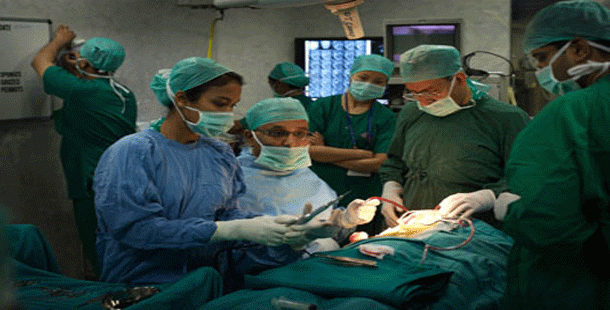Healthcare: worsening by the day

How does one explain the deaths of six more infants yesterday at the MGM Hospital in Warangal? According to media reports, these infants were placed in overcrowded radiant warmers, which led to their deaths. Over the last ten days, more than twenty infants have died in various hospitals across the state, including the Ruia Hospital in Tirupati and Niloufer Hospital in the state capital, which was once synonymous with high-quality paediatric medical care.
Opposition leaders, notably Chandrababu Naidu promptly swooped on the Ruia Hospital to demonstrate his sympathy for the families of the victims. Babu's crocodile tears are not likely to cut ice with anyone because it was the Telugu Desam government which cut funds to hospitals. The NTR government introduced the system of patients admitted to state-run hospitals having to pay for medicines that were needed for their treatment. This unprecedented move, was fine-tuned and completely institutionalized by his successor from the TDP, Chandrababu. Patients admitted to government hospitals found themselves being made to pay for basic medicines in much worse conditions than those of private hospitals. State-run hospitals like the Osmania, Gandhi and Niloufer in Hyderabad, the KGH in Visakhapatnam, the Kurnool government hospital and the MGM hospitals were among those that saw the flight of some reputed doctors to corporate hospitals.The Telugu Desam era witnessed the corporatization of healthcare and the worst sufferer during this time was quite expectedly, the common man, who cannot of dream of stepping into a private hospital. But gradually, he was driven to a point where he had no choice. Well-equipped private hospitals sprouted all over the twin cities and in urban centres across the state.
Coversely, government hospitals began to suffer. The absence of proper facilities and treatment in state-run hosptals reduced them to a pitiable state. Corporate hospitals on the other hand, attracted good doctors, and aided by technology, they moved rapidly to the cutting-edge of health care, in a wide range of disciplines even as government hospitals continued to suffer. Patients who went to a government hospital began to be referred to private centres for scans, MRIs, X-rays and other diagnostic tests. Several reputed medical centres were reduced to skeletal structures with bare facilities.When the late Dr. YS Rajasekhara Reddy first became the Chief Minister of the state in 2004, he came up with the path-breaking scheme of Aarogyasri, which ensured healthcare for all. The underlying logic was simple--patients below the poverty line could get themselves treated in the best of corporate hospitals and the government, in turn, would reimburse them. Corporate hospitals on their part, were more than happy with the arrangement. And as it turned out it was a win-win situation for all--the government, private hospitals and the suffering patients, who had till then, been left to fend for themselves. Aarogyasri was hailed as a model healthcare scheme by experts in the field and other states followed in the footsteps of Andhra Pradesh. The unfortunate demise of the late Dr. YS Rajasekhara Reddy in a helicopter crash changed everything and while the former chief minister's popular healthcare scheme remained in place, it got increasingly diluted. Long delays in reimbursement made corporate hospitals reluctant in admitting patients under the scheme.
Unless Aarogyasri is strengthened as a universal healthcare scheme that provides the poor and the deprived, access to the best of hospitals under government patronage, the apathy that we now see with respect to infant deaths will continue unabated.
-observer@sakshipost





